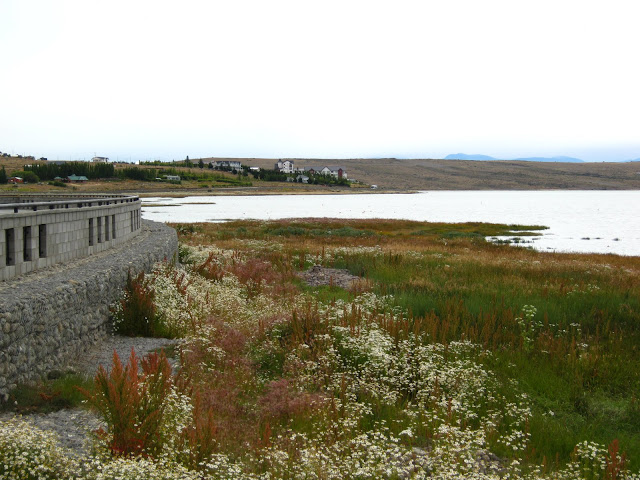Thanks to Alejandro (a Spanish friend I got to know when I was travelling in South America in 2010, who appears several times in my previous posts written three years ago), the first week in Barcelona went smooth; I stayed at his flat, he helped me with some administrative stuff and luckily, I managed to find a flat only after three days since my arrival in Barcelona.
I live in a neighbourhood called 'Raval', which is a part of Ciutat Vella (Old City). I can basically walk to everywhere in the city centre - it takes 10 minutes to walk to the sea front and about the same time to walk to the famous street in Barcelona, 'la Rambla'. I share a flat with only one person and we have a spacious living room, three rooms and a huge terrace. After sharing a small student flat with four people in London, living in such a place feels like a luxury (and I now pay 4/5 of what I paid in London)!
My street, Reina Amalia
Right below my flat, there is an Argentine cafe/restaurant
with a nice and sunny terrace
'Rambla del Raval', a miniature of the main Rambla in my neighbourhood
my room, with direct access to the terrace!
terrace
Taking advantage of having a huge terrace, I also started a tiny garden there. The first thing I do in the morning is to walk out to the terrace and see if my plants are doing well - it is such a nice and fresh start of the day!
garden in the terrace
Lettuce sprouts
This is the fourth week at the university. I am studying International Cooperation and International Organisation at the University of Barcelona. It is quite a small course with less than 30 people - half of them are Spanish (Catalans included) and about ten people are from Latin America, which leaves only four people (including me) from non-Spanish speaking countries. For now, I am doing okay with my Spanish (mainly because I am just attending lectures) but exams will be tough.
Besides going to university and taking care of my little garden, I go to the gym three times a week to do Pilates and the Argentine tango class. It feels great to dance tango again, although I have a lot to catch up. Finding a good tango class is not easy, from my experience in London, as everybody claims to be Argentine tango master but a lot seem to do some sort of fusion dance. But I happened to find Domingo Rey, classic tango dancer with more than 30 years of experience, I guess, and very satisfied with his teaching and the friendly atmosphere in the classes.
Now, all the paperwork (enrollment, registration with the local council, opening a bank account, etc.) is done, I got the Foreigner Identity Card, I have some friends to hang out with and I have daily/weekly routines. I feel like I am a resident here.



























































